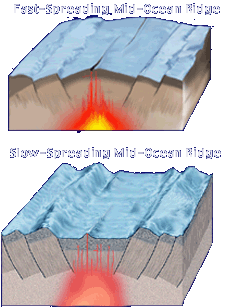
Lectures week 2.

Please read the second weeks' assignment in the course outline. We will be discussing Chapter 3 on Plate Tectonics and Chaper 4 on Seawater. Have a look at some of the ocean expeditions described at the WHOI Department of Geology and Geophysics to see what the ocean bottom looks like and what you find there. The "Dive and Discover" javascript is recommended.
Public Broadcasting Service has some great pictures of vent and deep sea creatures taken from theWHOI deep submersible Alvin.
National Geographic has an article about the oceans, and features a number of SIO faculty members including Walter Munk.
Energy policies in the US
depend on several sectors of the economy...residential and commercial, industrial,
and transportation. Think about how the oceans affect each of these three
segments. How can society produce the electricity and transportation facilities
it wants and needs and still not adversely affect the environment? The figure
is from the US DOE report "Powering the New Economy", September
27, 2000. You can download it from the
DOE webpage. See if you can find the articles about ocean sequestration
of CO_2. When CO_2 is compressed it becomes liquid and if it is pumped to
depths below 3000 meters it becomes solid. Future power plants may remove
the carbon dioxide they produce by burning fossil fuels and sequester (store)
it in the deep ocean. Plant life in the ocean removes carbon dioxide from
the atmosphere naturally, but this takes hundreds of years. Methane also
forms solid hydrates at great depths in the ocean, and at some point may
be a useful source of chemical fuel.

Note that the energy costs shown at the right are all in different units, so it is difficult to make a comparison. You must know that a barrel contains 42 gallons and that a gallon is 3.78x10^-3 m^3. Taking the density of oil as 10^3 kg/m^3 and assuming a heating value of 10^7 joules/kg gives 1.26x10^-8 $/joule (check it out). We already know that electricity at 3.6 cents/kwh costs $10^-8 $/joule so 6 cents/kwh is 1.67x10^-8 $/joule. You need to know that there are 0.3048 ft/m and that the density of natural gas is about 1 kg/m^3 to convert $2.5/1000 ft^3 to 0.88x10^-8 $/joule, and if we assume a short ton is 10^3 kg then coal is 0.15x10^-8 $/joule, the cheapest. This is why most electricity in the US is produced by burning coal. However, including adverse environmental costs reduces the coal advantage. Nuclear and wind costs are near 10^-8 $/joule at present, and the supplies are larger than demand by large factors.
One advantage of wind power is that new installations be small and rapid (megawatt turbines installed in a few months) compared to nuclear plants that require at least four years to construct and must be gigawatt (billion watt) size to be efficient. A disadvantage is that wind power is intermittent, and must be balanced (when the wind falls) by hydropower or some other constantly available source. Note that oil is now selling for $38/barrel and gas for $13/1000 ft^3, so that electricity now costs 17 cents/kwh in Southern California, which is triple the anticipated cost shown in the figure! Think about the advantages of electric cars or efficient internal combustion cars that get 80 mpg of gas, considering that the big transportation costs on the left side figure reflects mostly automobile fuel imported from other countries. The total energy bill for the US is about $10^12, or a trillion dollars (10% of our gross domestic product GDP).
Ocean transportation has been enhanced by wind power using sails for more than 5000 years. This ancient technology may be revived at some point when fossil fuel costs become excessive (or are made excessive through carbon taxes to reduce atmospheric pollution). Transportation by air is completely dependent on the use of petroleum based fossil fuel, so conservation of this nonrenewable source of energy for land and sea transportation seems to be the only hope for the US to become self-sufficient in this area.
For an overview of the earth from the SEAWIFFS satellite click here. The NASA Goddard Spaceflight Center website provides a wealth of general information about the Earth as viewed from space.
 To prepare for Professor Molotar's lecture next Tuesday,
have a look at The United Nations Convention on the Law
of the Sea.
To prepare for Professor Molotar's lecture next Tuesday,
have a look at The United Nations Convention on the Law
of the Sea.